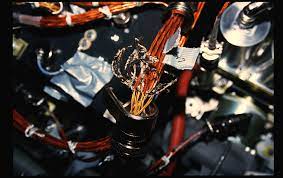An electrical assemblage of numerous electronic parts called an automotive wiring harness aids in delivering power and data to various modules inside an automobile. Automotive wiring harness shields wiring from abrasion, moisture, and vibration caused by moving parts. Electrical wires are joined together to form the entire automotive wiring assembly using various parts, such as conduits, electrical tape, cable ties, or a combination of these.
The market value of automotive wiring harness in 2021 was USD 49.04 billion and will reach USD 74.46 billion by 2030, growing at a 4.75% CAGR during 2021-2030.
The growing popularity of electric vehicles in emerging nations is boosting the market for automotive wire harnesses, as the diversity of electrical components used in EVs is much greater than in traditional cars. Governments worldwide are providing more tax advantages and incentives, driving the market for electric vehicles and raising the supply of wire saddles.
Market Dynamics
Drivers
The need for the automotive wire harness will be driven by the desire for improved safety features, including autonomous, emergency braking, blind-spot detection, lane departure warning system, and forward-collision warning system to prevent accidents and loss of life. Along with safety, the market will expand due to consumer desire for infotainment & telematics technologies that make it easier to use items like head-up displays, cameras, GPS, and other devices.
Restraints
When copper is exposed to extremely high or low temperatures or comes in contact with an electrolytic solution, its lifespan is shortened. Failure of the wiring harness results in sensor dysfunction, reduced data transmission, degraded current flow, and ignition failure. The material’s drawbacks and the results they produce might impede the market’s expansion.
Opportunities
The number of automobile wire harnesses is growing every day due to the sophisticated technologies’ continued expansion of vehicle features. The industry predicts that the increase in tax benefits and incentives offered by governments worldwide is also boosting the total demand for electric vehicles, which will present the market with plenty of prospects in the future.
Challenges
The majority of material utilized in vehicle wiring harnesses continues to be copper. It allows simple manufacture and assembly. Because of its excellent conductivity, flexibility, and dependability, copper is very common. However, supply-demand mismatches are caused by supply chain interruptions and logistical impediments, which make copper prices unstable on the global market. For market participants, this unpredictability poses a clear and serious issue.
Market Segmentation
On the basis of material, the market for automotive wiring harness is segmented into aluminum, copper, and others.
The entire market was ruled by copper, with the largest market share of 55% in the year 2021. Due to its high conductivity, which enables faster data transmission and optimal system performance, copper is the material of preference. It is easier to manufacture and assemble goods quickly. The flexible material copper is required to construct the intricate vehicle wire harness.
On the basis of components, the market is segmented into terminals, connectors, wires & others.
The terminals segment will grow at a rapid rate of 5.6% CAGR. The rise in cutting-edge automotive technology will drive the need for this market segment.
On the basis of application, the market for automotive wiring harness is segmented into the chassis wiring harness, engine harness, body & lighting harness, HVAC harness, dashboard & cabin harness, and others.
Chassis wiring harnesses led the market in 2021 with around 24% of the total revenue. The widespread use of this product in door frames, window frames, fog lamps, and turn indicators, among other things, can be blamed for the segment’s supremacy.
On the basis of vehicle use, the market is segmented into commercial vehicles and passenger vehicles.
In 2021, the largest market was held by the passenger vehicle segment, with around 61% of the share. The domination of this market sector has been attributed to the rising demand for passenger cars, which has also seen a corresponding growth in the desire for cars with cutting-edge features.
Regional Analysis
North America, Europe, South America, Asia Pacific, the Middle East, and Africa are among the geographical areas evaluated for the market.
With a 35.2% revenue share in 2021, the Asia Pacific contributed for largest market share by region. Due to rising consumer disposable income and consequently rising demand for automobiles, the Asia Pacific region has a dominant position in the global market for automotive wire harnesses. Due to the government’s new regulations supporting the manufacturing and market demand for electric vehicles, Asia-Pacific will grow throughout the projection period.
Key Players
- Furukawa Electric Co., Ltd
- Lear Corporation
- Aptiv PLC
- Yazaki Corporation
- Fujikura Ltd.
- Leoni AG
- Sumitomo Electric Industries, Ltd
- NexansAutoelectricGmbh
- SamvardhanaMotherson Group
- Yura Corporation
The market value of automotive wiring harness in 2021 was USD 49.04 billion and will reach USD 74.46 billion by 2030, growing at a 4.75% CAGR during 2021-2030. The market will boost due to the growing demand to improve the transfer of signals, data, and power utilizing electrical and data transmission lines.
Apart from that, if you are interested to know about Navigating Market Dynamics then visit our Business category.











